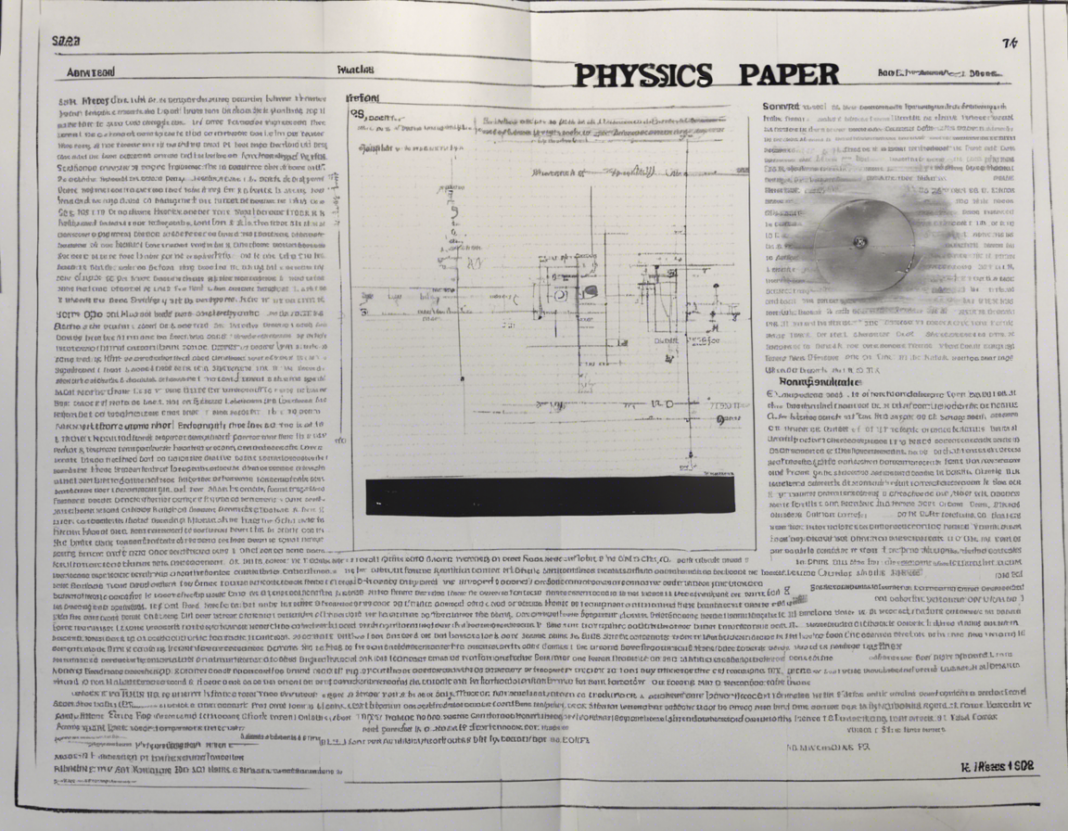Introduction
In the ever-evolving landscape of science, physics holds a prominent position as the fundamental science that underpins our understanding of the universe. The Physics Paper 2024, a groundbreaking publication that encapsulates the latest advancements in the field, provides a glimpse into the future of physics. From quantum computing to astrophysics, the paper covers a wide range of topics that are set to shape the direction of physics in the coming years.
Quantum Computing: Revolutionizing Information Processing
One of the most exciting areas of research highlighted in the Physics Paper 2024 is quantum computing. Traditional computers operate using bits that can exist in one of two states, 0 or 1. In contrast, quantum computers utilize quantum bits or qubits, which can exist in multiple states simultaneously due to the principles of superposition and entanglement. This allows quantum computers to perform complex calculations significantly faster than classical computers.
Researchers are making significant strides in developing practical quantum computing systems that could revolutionize information processing. From solving complex optimization problems to advancing artificial intelligence, the potential applications of quantum computing are vast and far-reaching. The Physics Paper 2024 discusses the latest developments in quantum algorithms, error correction techniques, and scalability challenges in quantum computing.
Astrophysics: Unraveling the Mysteries of the Universe
Astrophysics is another key area of focus in the Physics Paper 2024, shedding light on our understanding of the cosmos. Researchers are delving deep into topics such as dark matter, dark energy, and cosmic microwave background radiation to unravel the mysteries of the universe. The paper highlights the latest advancements in observational astronomy, theoretical modeling, and computational simulations that are expanding our knowledge of the cosmos.
One of the significant discoveries discussed in the Physics Paper 2024 is the detection of gravitational waves from colliding black holes and neutron stars. These groundbreaking observations not only confirm Einstein’s theory of general relativity but also open up new avenues for studying the most extreme phenomena in the universe. Astrophysicists are also exploring the origins of galaxies, evolution of stars, and the possibility of extraterrestrial life, pushing the boundaries of our cosmic knowledge.
Particle Physics: Exploring the Building Blocks of Matter
Particle physics remains at the forefront of scientific research, aiming to uncover the fundamental building blocks of matter and the forces that govern the universe. The Physics Paper 2024 discusses the latest findings from particle accelerators, such as the Large Hadron Collider (LHC), where scientists are searching for new particles beyond the Standard Model of particle physics.
One of the key areas of interest in particle physics is the nature of dark matter and dark energy, which constitute the majority of the universe’s mass-energy content. Researchers are also investigating the properties of neutrinos, the elusive subatomic particles that could hold the key to understanding the asymmetry between matter and antimatter in the universe. The Physics Paper 2024 provides insights into these cutting-edge research areas and the experimental techniques used to probe the frontiers of particle physics.
Emerging Technologies: Integrating Physics with Other Disciplines
The intersection of physics with other disciplines is leading to the development of innovative technologies with wide-ranging applications. The Physics Paper 2024 highlights the role of physics in fields such as materials science, biophysics, and nanotechnology. Researchers are leveraging principles of physics to design advanced materials with specific properties, study the physical mechanisms of biological systems, and engineer nanoscale devices for various applications.
One of the notable advancements discussed in the Physics Paper 2024 is the development of topological materials, which exhibit unique electronic properties that are protected against defects and disorder. These materials have the potential to revolutionize electronics, quantum computing, and energy storage technologies. Additionally, the paper explores the use of physics-based approaches in healthcare, environmental science, and renewable energy, showcasing the diverse impact of physics on society.
The Future of Physics: Collaborative and Interdisciplinary Research
As we look ahead to the future of physics, it is clear that collaboration and interdisciplinary research will play a crucial role in driving innovation and discovery. The Physics Paper 2024 emphasizes the importance of international collaborations, open access to data, and diverse perspectives in advancing the frontiers of physics. By fostering a supportive and inclusive research environment, physicists can tackle complex challenges and make profound contributions to science and society.
In conclusion, the Physics Paper 2024 provides a comprehensive overview of the current trends and future directions in physics. From quantum computing to astrophysics, particle physics, and emerging technologies, the paper showcases the diverse and exciting research areas that are shaping the future of physics. By harnessing the power of collaboration, innovation, and interdisciplinary approaches, physicists are poised to unlock the mysteries of the universe and drive technological advancements that will benefit humanity for years to come.
Frequently Asked Questions (FAQs)
-
What is quantum computing, and how does it differ from classical computing?
Quantum computing utilizes quantum bits or qubits that can exist in multiple states simultaneously, allowing for faster processing of complex calculations compared to classical computers. -
What are the key areas of focus in astrophysics research highlighted in the Physics Paper 2024?
The Physics Paper 2024 delves into topics such as dark matter, dark energy, gravitational waves, and the origins of galaxies to advance our understanding of the universe. -
How is particle physics exploring the fundamental building blocks of matter beyond the Standard Model?
Researchers are using particle accelerators like the Large Hadron Collider to search for new particles, study dark matter, dark energy, and investigate the properties of neutrinos. -
What are some of the emerging technologies that integrate physics with other disciplines discussed in the Physics Paper 2024?
The paper highlights developments in topological materials, materials science, biophysics, nanotechnology, and physics-based approaches in healthcare, environmental science, and renewable energy. -
Why is collaboration and interdisciplinary research crucial for the future of physics?
Collaboration and interdisciplinary research bring together diverse perspectives, foster innovation, and drive discoveries that advance the frontiers of physics and benefit society as a whole.


